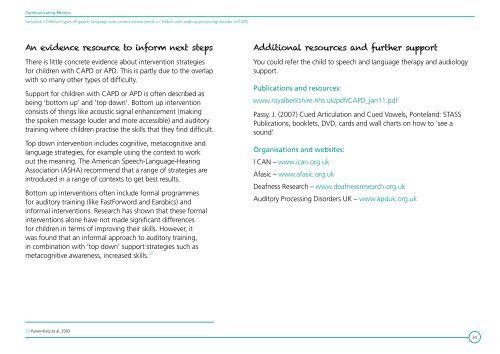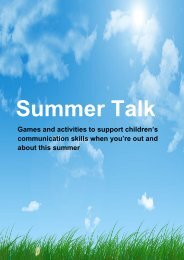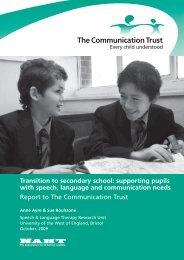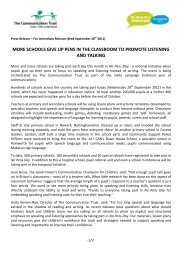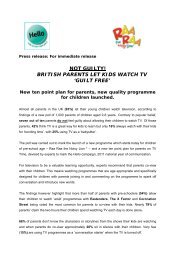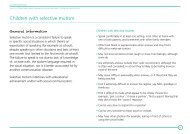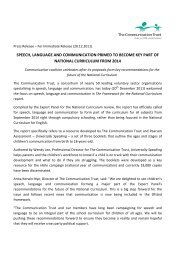Communicating Phonics - The Communication Trust
Communicating Phonics - The Communication Trust
Communicating Phonics - The Communication Trust
Create successful ePaper yourself
Turn your PDF publications into a flip-book with our unique Google optimized e-Paper software.
<strong>Communicating</strong> <strong>Phonics</strong>Section 4 > Different types of speech, language and communication needs > Children with auditory processing disorder or CAPDAn evidence resource to inform next steps<strong>The</strong>re is little concrete evidence about intervention strategiesfor children with CAPD or APD. This is partly due to the overlapwith so many other types of difficulty.Support for children with CAPD or APD is often described asbeing ‘bottom up’ and ‘top down’. Bottom up interventionconsists of things like acoustic signal enhancement (makingthe spoken message louder and more accessible) and auditorytraining where children practise the skills that they find difficult.Top down intervention includes cognitive, metacognitive andlanguage strategies, for example using the context to workout the meaning. <strong>The</strong> American Speech-Language-HearingAssociation (ASHA) recommend that a range of strategies areintroduced in a range of contexts to get best results.Bottom up interventions often include formal programmesfor auditory training (like FastForword and Earobics) andinformal interventions. Research has shown that these formalinterventions alone have not made significant differencesfor children in terms of improving their skills. However, itwas found that an informal approach to auditory training,in combination with ‘top down’ support strategies such asmetacognitive awareness, increased skills. 33Additional resources and further supportYou could refer the child to speech and language therapy and audiologysupport.Publications and resources:www.royalberkshire.nhs.uk/pdf/CAPD_jan11.pdfPassy, J. (2007) Cued Articulation and Cued Vowels, Ponteland: STASSPublications, booklets, DVD, cards and wall charts on how to ‘see asound’Organisations and websites:I CAN – www.ican.org.ukAfasic – www.afasic.org.ukDeafness Research – www.deafnessresearch.org.ukAuditory Processing Disorders UK – www.apduk.org.uk33 Putzer-Katz et al, 200234


